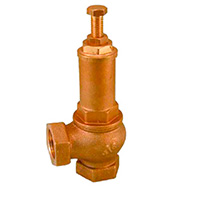Safety valves
Description of Section "Safety valves"
Safety valves are devices designed to protect pipelines and equipment from excessive pressure. They automatically release excess working medium into the atmosphere or a discharge pipeline, preventing mechanical destruction of the system. Once the pressure drops to an acceptable level, the valve automatically closes.
Types of Safety Valves
Safety valves are classified according to various parameters:
1. By principle of operation:
- Direct-acting: Act directly under the influence of the working medium.
- Indirect-acting (impulse): Controlled remotely through pressure sensors and control devices.
2. By type of load on the closing element:
- Spring-loaded: Use the force of a compressed spring to hold the spool.
- Weight-loaded: Hold the spool by the weight of a load.
- Lever-spring: Combine a lever and spring to adjust the force.
3. By connection type:
- Threaded connections (internal or external threads).
- Flanged connections.
4. By material of construction:
- Brass
- Cast iron
- Carbon steel
- Stainless steel
Main advantages of using safety valves
- Protection of equipment from destruction when pressure exceeds the permissible level.
- Automatic operation without the need for an external drive or operator intervention.
- Ability to adjust the activation threshold for specific operating conditions.
Safety valves are used in the following systems:
- Heating - protection of boilers and pipelines from water hammer and overheating.
- Water supply - prevention of pipe bursts due to water pressure surges.
- Industrial systems - protection of tanks, compressors, and pumps from overloads.
- Gas systems - control of gas pressure in pipelines and equipment.

